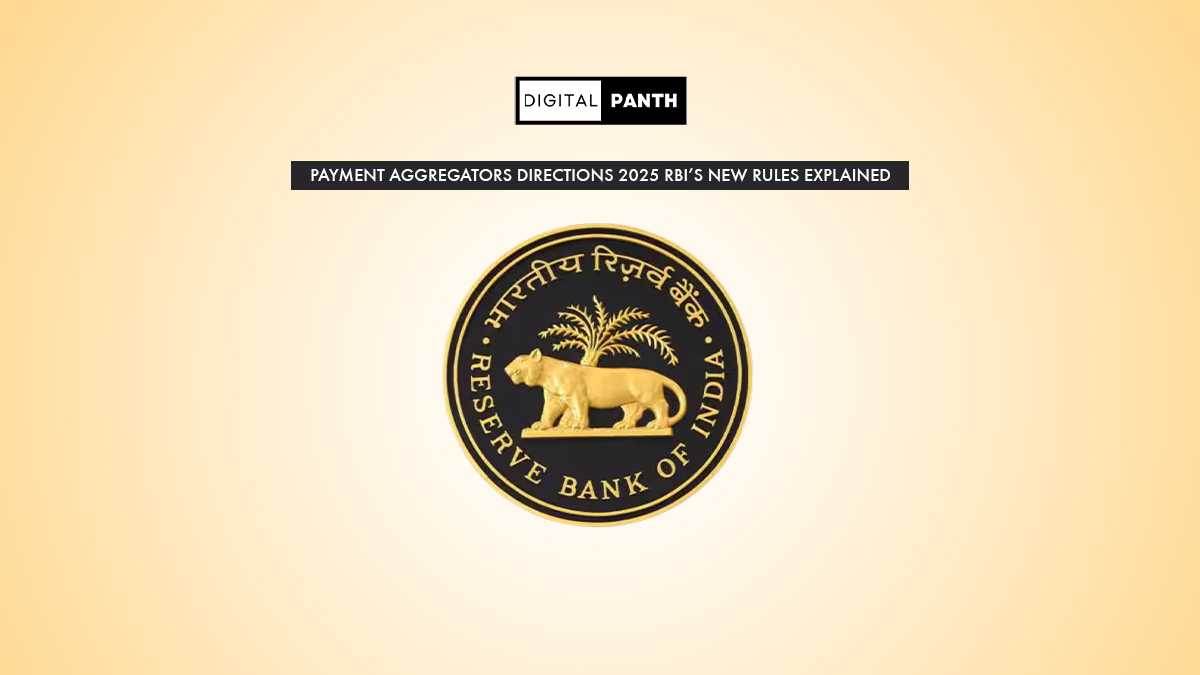The Reserve Bank of India (RBI) has released comprehensive final guidelines to regulate payment aggregators in India, introducing stricter compliance and operational frameworks designed to strengthen the payment ecosystem.
| Official SEBI Circular: RBI/DPSS/2025-26/141 |
RBI’s Classification of Payment Aggregators
The new regulation — Payment Aggregators Directions, 2025 divides payment aggregators into three categories:
- PA-P (Physical Aggregators): Organizations that enable offline payments from merchants to customers.
- PA-CB (Cross-Border Aggregators): Facilitators involved in international transactions across Indian borders.
- PA-O (Online Aggregators): Online payment operators only.
This formal classification aims to address the unique risks and needs associated with each business model in the rapidly evolving payments sector.
Capital and Authorization Requirements
One of the most important components of the regulation is the capital requirement for non-bank payment aggregators.
- Initial and Subsequent Net Worth: As part of the initial application, non-bank payment aggregators will need to have a Net Worth of ₹15 crore at the point of application, and then upgrade that Net Worth to ₹25 crore at the end of the third financial year.
- Banks Exempted: Banks that are operating as aggregators will not be required to seek authority from the RBI to operate as aggregators, since they are already operating under a stronger regime of regulation.
The purpose of these parameters is to ensure that a financially stable set of entities operate as payment aggregators to promote systemic stability and consumer confidence.
Escrow and Fund Management Norms
The regulations have also set strict parameters with respect to how funds will be managed by payment aggregators.
- Escrow Accounts: Payment aggregators will need to have dedicated escrow accounts that will be separate from its own accounts. The accounts will protect both customer funds and merchant funds until the settlement process is completed.
- Fund Movement: In addition, where and when funds are received and/or transferred, payment aggregators must follow prescribed parameters to ensure funds are processed in a timely manner, protected from fraud or misuse, and with transparency throughout the process.
Cross-Border Payment Limits
For cross-border (PA-CB) facilitators, the guidelines specify:
- Transaction Limits: The regulatory framework will include parameters related to limits for transaction amounts processed on an aggregator to reduce risk from international exposure.
- Compliance Requirements: Cross-border payment aggregators will be required to ensure compliance with FEMA while conducting their business related to international transactions as well as anti-money laundering and KYC policies and processes
Promoter Criteria
The RBI stresses the value of ethical governance:
- Fit and proper criteria: Promoters of payment aggregator entities will need to meet high standards of integrity, competence, and past financial history to qualify under the new regime.
Background and Implementation
- Consultative process: A consultative process preceded the final notification. Draft directions were sent out in April 2024 and were revised based on industry input and meetings with other stakeholders.
- Immediate effect: The applicable legal framework comes into effect immediately and will largely reshape payment transactions in India.
Implications for Stakeholders
- Merchants and consumers: The guidelines will promote greater security, faster settlements, and greater protection against fraud, in relation to both digital and offline transactions.
- Non-bank aggregators: The guidelines will increase compliance costs; however, greater clarity and barriers to entry may lead to increased professionalism and reliability within the sector.
- Banks: Will continue to offer payment aggregator services, using existing infrastructure and facilitated regulatory compliance mechanisms, without obtaining a new license.
Conclusion
RBI’s new rules for payment aggregators are an important step in regulating India’s growing digital payments industry. These rules focus on strict entry checks, clear and transparent operations, and strong monitoring. The aim is to support innovation while also protecting customers and keeping the financial system safe. This decision eases worries in the industry and gives confidence to all stakeholders. It also helps India strengthen its position as one of the leading digital payment markets in the world.

